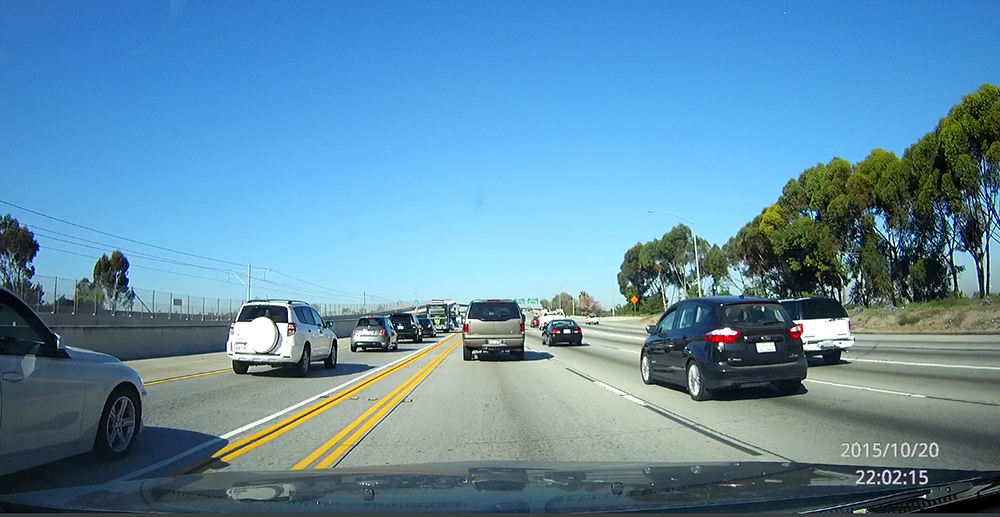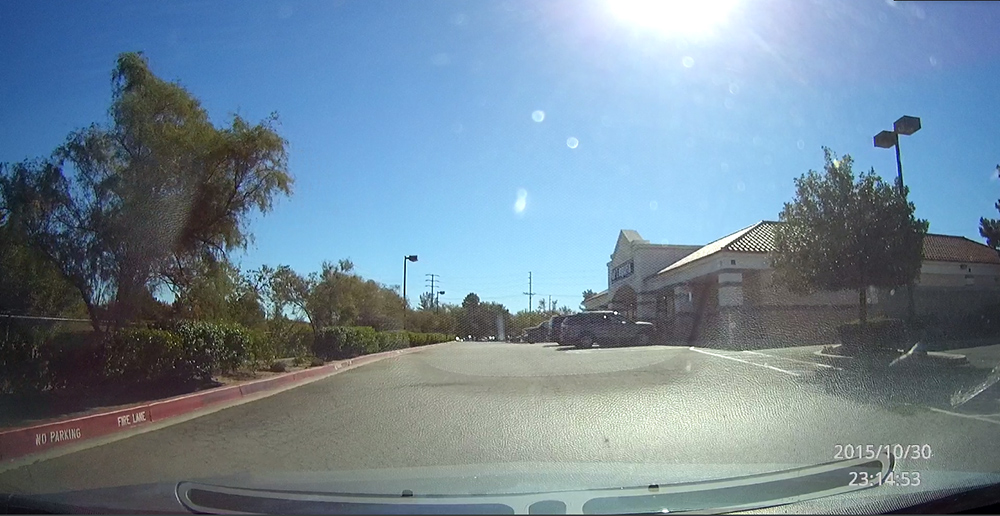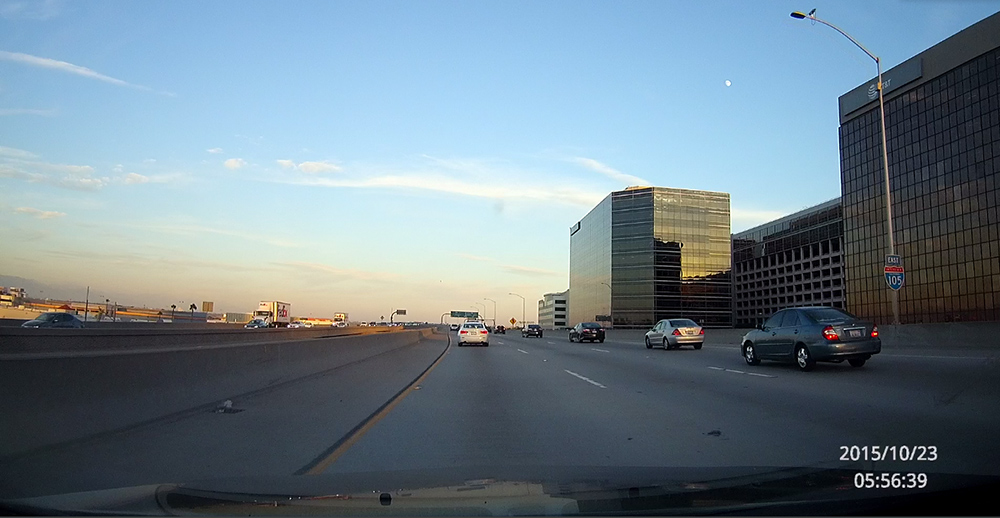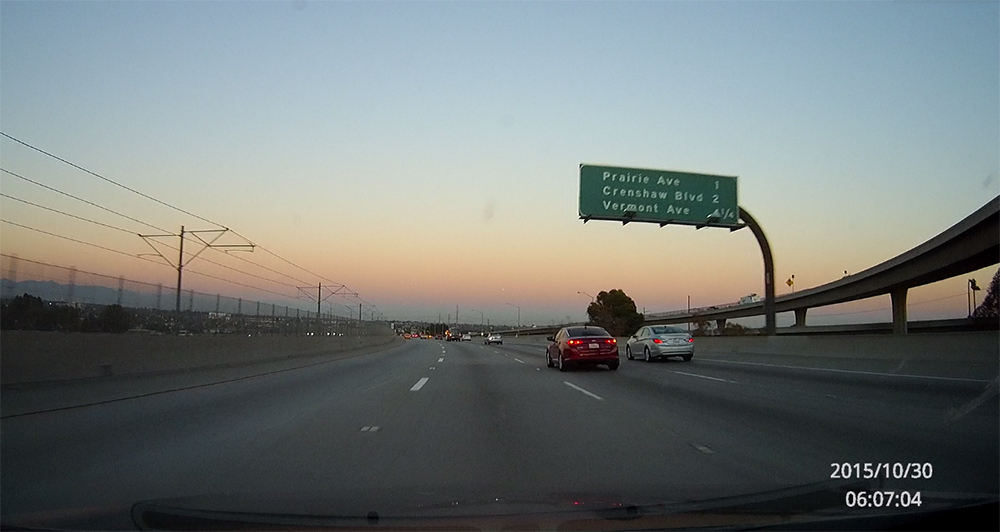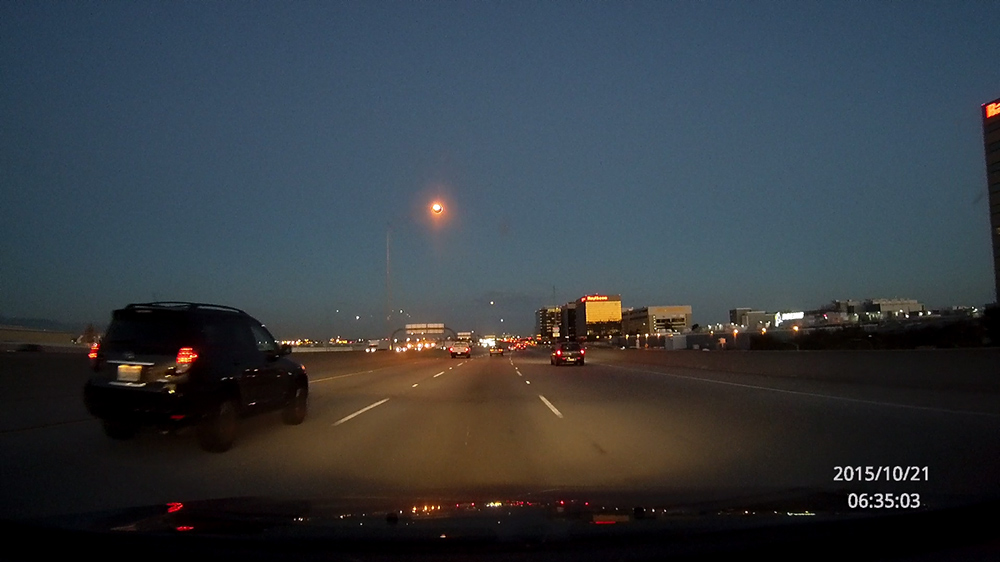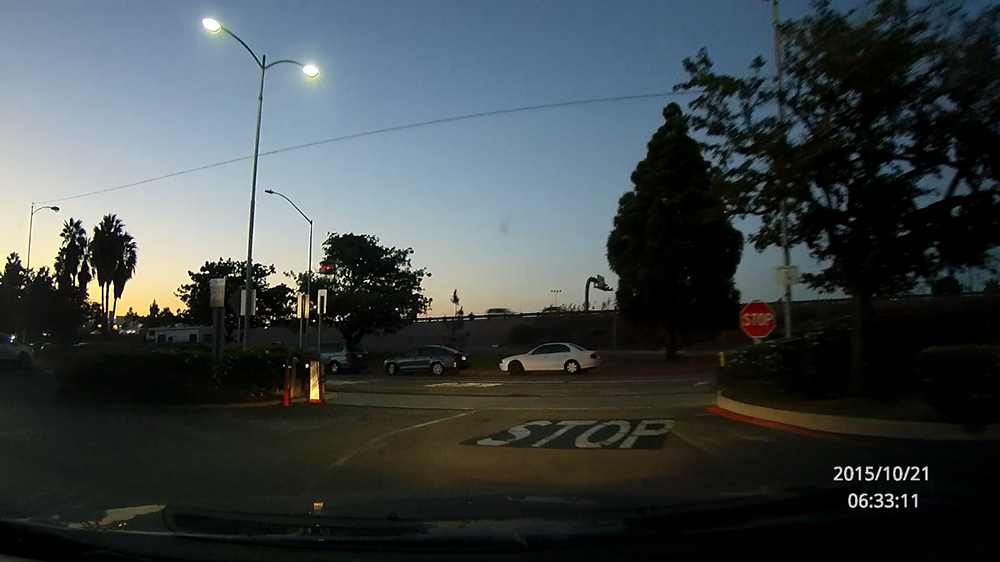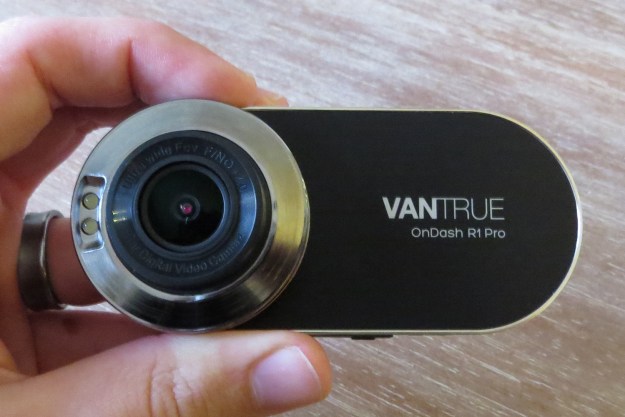
- 2K video resolution
- Extremely affordable
- Sleek metal body and quality construction
- Clear recordings in low-light situations
- Wide 170-degree viewing angle
- MicroSD not included
- Internal battery is rather small
The dash cam has been a popular automotive accessory in other countries and has now found its way into the American market. For times when you need to record accidents, scenic trips, or simply track down who had been keying your car – there is no better solution. For instance, I recently had an accident where the other driver wasn’t insured and a dash cam could have helped spot the license plate, giving a clear indication of what happened to the insurance company. After my incident I turned to Vantrue to get a look at their latest R1 Pro dash cam and see if they could help keep a more watchful eye on my commute.
What’s included?
Out of the box, the Vantrue R1 Pro includes the camera unit, a 11.8ft micro USB cord, 12-volt charger, and suction mount. Unlike many other competitors, the R1 Pro does not come with a microSD card so you will need to purchase one separately from the $120 dash cam package. The Vantrue camera supports up to a 64GB microSD card but I tested with a 8GB card and there was plenty of room for nearly an hour of footage with the highest quality video settings.
The R1 Pro camera itself has great build quality with a metal exterior in a silver/black finish. The only downside of the metal body was the high temperatures the camera reached on warmer days. The 2.7-inch TFT screen has great viewing angles and the six-button layout around the screen is easy to use to navigate. The bottom of the camera features the power button, a slot for the MicroSD card, micro USB charger port, and a micro HDMI output.
Features
On paper the Vanture R1 Pro has some impressive statistics as the camera boasts a 170-degree viewing angle and up to 16 megapixels. Most dash cameras on the market have somewhere between 120- and 140-degree viewing angles, and can cut off some of the lanes next to your vehicle. The camera settings allow for a wide range of video resolution including: 2,560 x 1080 (2K) at 30fps, 1080p at 45fps, 720p at 60fps, and an HDR (High Dynamic Range) mode for increased clarity. These numbers are fantastic for a dash cam as they match or exceed older action cameras like the GoPro Hero 2.
The standard options for a dash camera are included, and the device has a G-sensor with sensibility controls to lock video on impact, audio recording on/off, options to power on and record when the engine is started, a parking monitor that senses movement up to 30 ft away, and a manual lock feature to save important video so that it cannot be overwritten. The Vantrue also includes a popular feature on dash cameras outside the US that lets you input a Driver ID with license plate number or driver name to allow you to stamp the video with that information.
Plug in and go
Installing the dash camera in any car is simple as you suction the mount to the windshield around the rear-view mirror and plug in the USB power source to a 12-volt outlet. I installed the 8GB SD card and changed the R1 Pro to the 2K video setting with HDR enabled. In this format I could store around 50 minutes of footage before it started recording over the older clips. There is a setting to choose how long you want the individual .MOV video files to be : 1 minute, 3, minutes, or 5 minutes. I chose longer 5-minute clips, and you can even turn looping off so that it records one long clip until the card is full. The battery within the camera is only 250mAh, so the camera must be plugged in to record longer sessions. It has just enough power to record when the motion detector senses movement in parking mode. I was able to capture several folks passing by the car while it was in a parking garage at the office using this feature.
Video quality
For any dash camera, the pass or fail boils down to the quality in which it records your drive. Thankfully, the Vantrue passes with flying colors. There may be other cameras with features like compatible mobile applications and standard GPS location (there’s an optional input for GPS on the R1 Pro) but the Vanture beats everything I have seen in the $120 price range in pure video quality. There were no choppy clips, and the clarity made it much easier to read license plates and capture details that are often lost with some of the lower priced dash cameras. Quality in dark parking garages or at night were fantastic, and the R1 Pro has two LEDs near the lens to help illuminate and capture images in low light. The only video issues came from glare off the windshield and dashboard, which is simply unavoidable in brighter conditions.
Conclusion
The DT Accessory Pack
Up your game and the get the most out of your gear with the following extras, hand-picked by our editors:
Vantrue PowerUp C1 ($10)
AAA Excursion Road Kit ($60)
Avantree Bluetooth Car Kit ($30)
Often, budget dash cameras sacrifice all the wrong things, and you end up with poor video quality and faulty camera software. The Vantrue R1 Pro only sacrifices “nice-to-have” premium features like larger battery size, cloud storage, and a Bluetooth phone connection. What’s left is an affordable camera that excels at exactly what it was made for – capturing your drive in the best way possible.
Highs
- 2K video resolution
- Extremely affordable
- Sleek metal body and quality construction
- Clear recordings in low-light situations
- Wide 170-degree viewing angle
Lows
- MicroSD not included
- Internal battery is rather small


